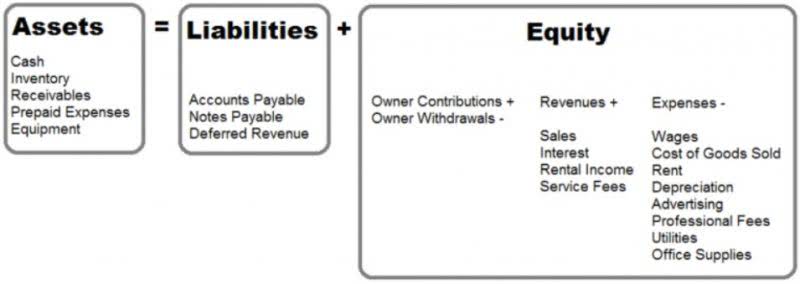In this example, the table includes columns for the customer’s name, the invoice amount, the payment terms (indicating when the payment is due), and the due date for each customer’s invoice. These components represent accounts receivable, which are the outstanding amounts owed to a company by its customers for goods or services provided on credit. These are all components of current receivables, which represent the amounts owed by customers that are expected to be collected within a relatively short period, usually within one year. Trade receivables is the amount that customers owe to a business when buying a product or service on credit.

Ready to Experience the Future of Finance?
The company uses this table to track and manage its accounts receivable, ensuring timely collection of outstanding payments and monitoring the due dates for each customer’s invoice. In accounting, receivables are amounts owed to a company by customers or entities, representing the right to receive payment for goods or services. For an invoice amount to be added to trade receivables, full payment must be expected within one year. Non-trade receivables are amounts owed to a business that are not related to the business’s primary operations involving the sale of goods or services. While trade receivables (often simply called “receivables”) typically come from customers who have purchased goods or services on credit, non-trade receivables originate from other sources. Usually, you will not bill the non-trade items stated above by usingyour company’s accounting software.
- 11 Financial may only transact business in those states in which it is registered, or qualifies for an exemption or exclusion from registration requirements.
- Management needs to know how much cash the business currently has and expects to have in the future, so they can raise capital or make changes in operations before cash runs out.
- For example, automobiles are sold to dealers at a percentage of the sticker price.
- The company uses this table to track and manage its notes receivable, monitor the repayment schedule, calculate interest earned, and ensure the timely collection of principal and interest payments.
- They are almost always classified as current because their normal collection period is part of, and therefore less than, the operating cycle.
- The company may have gone out of business, maybe their industry is seeing a downturn in demand, or it simply does not have the cash flow.
To Ensure One Vote Per Person, Please Include the Following Info

Our success stories will help you assess the business impact created by Credlix for our customers. This does not have to be a large amount, it can be 5% or a flat dollar figure, but if it’s a company that will be doing a lot of business with you, chances are they will appreciate it. We follow strict ethical journalism practices, which includes presenting unbiased information and citing reliable, attributed resources. 11 Financial is a registered investment adviser located in Lufkin, Texas. 11 Financial may only transact business in those states in which it is registered, or qualifies for an exemption or exclusion from registration requirements. 11 Financial’s website is limited to the dissemination of general information pertaining to its advisory services, together with access to additional investment-related information, publications, and links.

Advance Your Accounting and Bookkeeping Career
Non-trade receivables are also assets, but as the name suggests, it doesn’t arise from the sale of goods or services. For example, insurance payouts or tax rebates on a balance sheet vendor non-trade receivables will fall under non-trade receivables until they are converted to cash. Trade receivables as a standalone metric don’t tell much about a business’s financial position. However, we can calculate the days sales outstanding (DSO) of a business with the trade receivables and annual revenue figures. A business can calculate its trade receivables by summing up the amount that all its customers owe them. It is generally divided into two parts called debtors and bill receivables.
Financing Trade Receivables
Yes, negative trade receivables can occur due to customer overpayments or credit notes issued by the seller. Motivate buyers to pay before the due date by offering attractive early payment discounts. For instance, a seller might offer a 2% discount on invoices settled within the first 10 days. For example, adding a 1% penalty for every week the payment is overdue can serve as a reminder for buyers to prioritize timely payments. This two-pronged approach balances encouragement and accountability, fostering promptness.
- A financial professional will offer guidance based on the information provided and offer a no-obligation call to better understand your situation.
- These unreceivable receivables are in the form of bills to be collected from other parties.
- Notes receivable represent formal written promises by borrowers to repay a specific amount of money to the lender at a future date.
- In the same way, if it buys back stock or pays off debt or even pays dividends to shareholders, that’s cash going out.
- Long-term receivables without interest can be measured at their amortized cost, reduced by any potential impairment losses.
In the event that a receivable from an officer or stockholder is written off, full disclosure should be provided of the significant facts because of the related-party situation. Due to their nonroutine nature, the determination should generally be accomplished on an item-by-item basis. Further, as this example shows, the income and expense may offset each other only after several periods. The fact that these amounts offset each other is Bookstime not as important as the fact that the two fundamentally different activities of executive compensation and lending are being carried out. The $18,838 is recovered over the life of the note as interest income ($8,928 + $9,910). Suppose that the Sample Company engaged the services of a new chief executive in January 2021.
Whether it is through the balance retained earnings sheet approach or the profit and loss approach. This approach is acceptable for these receivables because non-collection is generally less frequent and thus not as easily anticipated. If appropriate, the receivable should be clearly identified and listed on the balance sheet.

